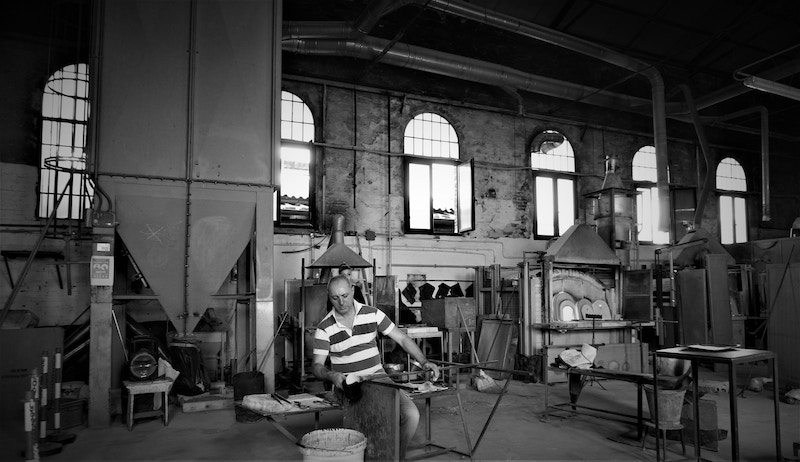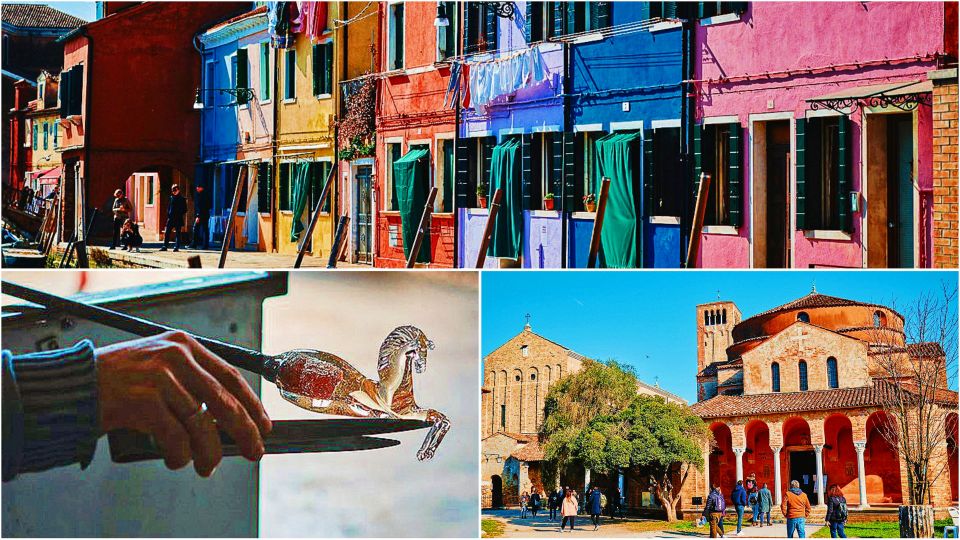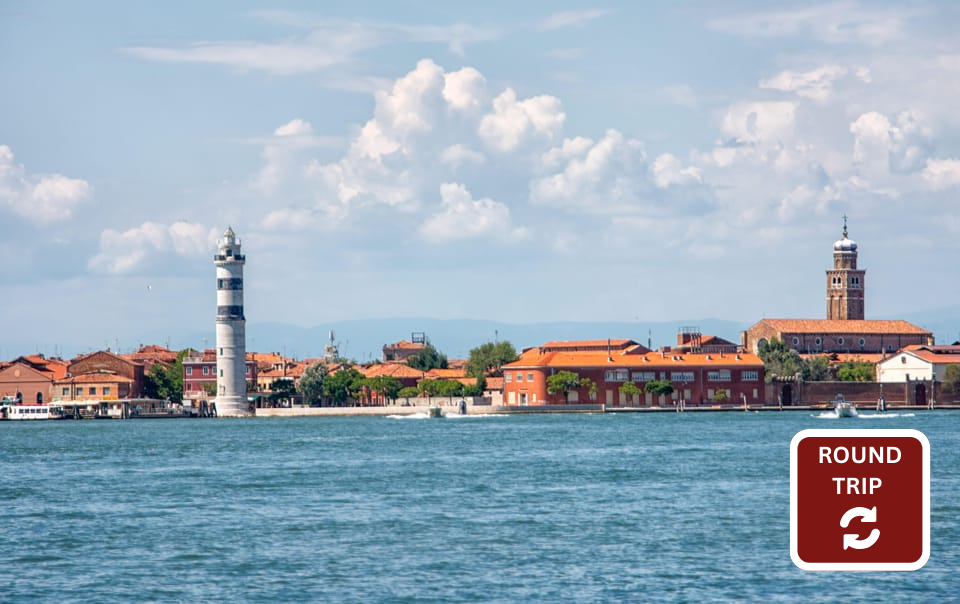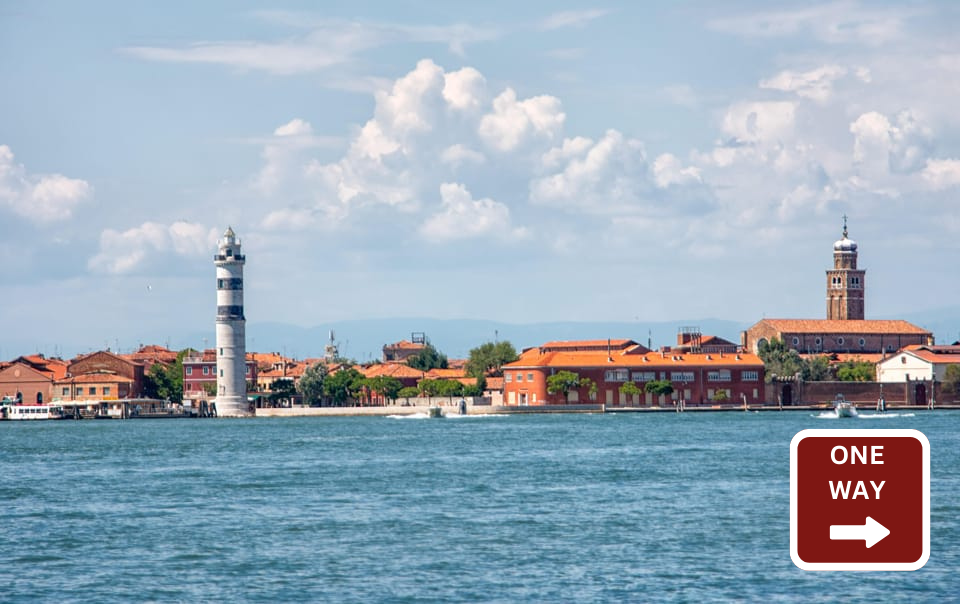Ready to embark on an exciting Murano Boat Tour Venice? When you think of Venice, images of winding canals, historic architecture, and exquisite art might come to mind. But there’s a lesser-known gem just a short boat ride away from the heart of Venice, Murano, known as the “Glass Island.” It is a place steeped in history, tradition, and artistry, with its fame anchored in the centuries-old tradition of glass-blowing. Discover with us some fascinating curiosities about the glass-blowing heritage that makes this island a must-visit destination.
The history of Murano
The story of Murano begins over a thousand years ago. In the late 13th century, the Venetian Republic made a strategic decision to move the city’s glassmaking industry to Murano. The primary reason was to reduce the risk of fire in Venice’s tightly packed wooden buildings, which were highly susceptible to the fiery consequences of glass-blowing furnaces. Additionally, the government hoped to prevent the secrets of Venetian glassmaking from spreading to other regions and competitors.
Murano’s history as hub for glass production transformed it into the world’s epicentre of glassmaking. Skilled artisans and craftsmen flocked to the island to practice their craft, and they did so with dedication and secrecy. This focus on excellence, alongside a commitment to maintaining the art, as a closely guarded secret, contributed to the island’s status as a beacon of innovation in the glass-blowing world.
The glass-blowing tradition
Visiting Murano today, you can witness the art of glass-blowing in its purest form. The master glassblower, also known as “Maestro,” skilfully manipulates molten glass to create exquisite works of art, from delicate figurines to grand chandeliers. This art form has been passed down through generations, and the skills required to excel in glass-blowing often take years to acquire.
One of the most iconic aspects of Murano’s glass-blowing tradition is its intricate glass beads. These beads, known as “Murrine,” are made by layering different colours of molten glass to create intricate patterns. The process is incredibly meticulous, and it’s fascinating to watch the Maestros at work, pulling and shaping the glass to create these miniature works of art. Murrine beads are used in a variety of jewellery and accessories, making them a unique and cherished souvenir from your visit to Murano.
Glass-blowing curiosities
As you explore Murano on a boat tour from Venice, you’ll encounter some intriguing facts and curiosities related to the island’s glass-blowing tradition. Here are a few to pique your interest:
- The Glass master’s apprentice: in the traditional apprenticeship system, aspiring glassblowers began as young as 10 years old. They would spend years learning the craft under the guidance of a master. This arduous training, combined with the necessity of secrecy, meant that many artisans remained on the island for life.
- Glassmakers’ secret language: to protect their trade secrets, Murano’s glassblowers often developed their own coded language. They could discuss their techniques, recipes, and trade secrets without revealing anything to potential competitors.
- The island of innovation: the glassblowers of Murano were not only exceptional in their craft, but they were also innovators. They were responsible for pioneering new glassmaking techniques, including “crystal glass” and “millefiori” (thousand flowers) glass, which is characterized by intricate patterns and designs.
The legacy of Murano
Today, Murano remains a thriving hub for glass artistry, and its legacy extends far beyond the shores of Venice. The island’s master glassblowers continue to create exquisite pieces, preserving and innovating upon the techniques passed down through generations. Whether you’re seeking a stunning memento of your trip or simply want to witness this ancient craft in action, Murano is the place to be.
The island’s rich tradition of glass-blowing has also played a pivotal role in the development of the global glass industry. The techniques and expertise that originated in Murano have influenced glassmaking worldwide, making it a pivotal part of Venice’s cultural and economic heritage.
Murano Boat Tour Venice
Now that you’ve been introduced to the captivating world of Murano and its glass-blowing legacy, you might be wondering how to visit this enchanting island. A boat tour from Venice is the most common and convenient way to get there. The journey to Murano is not only a means of transportation, but also an opportunity to soak in the picturesque Venetian lagoon.
As you sail through the serene waters of the lagoon, you’ll be captivated by the charming scenery that surrounds you. The view of Venice’s historic architecture, including St. Mark’s Basilica and the Doge’s Palace, will make the boat ride to Murano an unforgettable experience.
Once you arrive in Murano, you’ll have the chance to explore its numerous glass factories and showrooms, each offering a unique perspective on the island’s glass-blowing heritage. You can also visit the Murano Glass Museum, which provides valuable insights into the history and development of Murano glass art.
Serenissima Tour leads you to all this!
Murano’s status as the “Glass Island” is richly deserved, and its history is as colourful as the glass it produces. If you’re planning a visit to Venice, don’t miss the opportunity to embark on a boat tour to Murano with Serenissima Tour and immerse yourself in the mesmerizing world of glass-blowing that has thrived here for centuries.
Murano Boat Tour Venice with La Serenissima
Keep reading: 5 reasons to discover the Venetian Lagoon by boat





